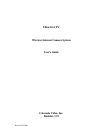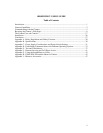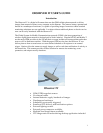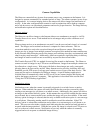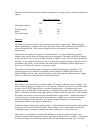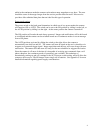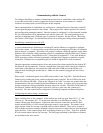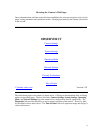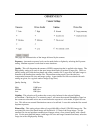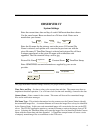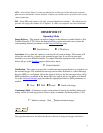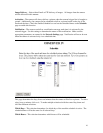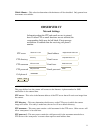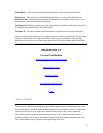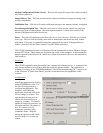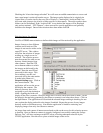
2
Camera Capabilities
The Observer camera delivers pictures from remote areas to any computer on the Internet. It is
designed to operate, unattended, for extended periods of time. The camera operates in one of two
configurations. As a remote imaging device, the camera will deliver images and notification of
activity. In the other configuration the camera is used in conjunction with a desktop computer
and a web browser to set operational parameters and test for proper function. The image delivery
and notification options are described below.
Delivery options
The Observer can deliver images to the Internet either as an attachment to an email or via File
Transfer Protocol to a server. Each method has its advantages and provides a different set of
capabilities.
When an image arrives as an attachment to an email, it can be accessed and viewed, as is normal
email. The images can be retained on the user's computer for future reference. This is a
convenient method to receive the occasional image from an Observer camera. When many
images per day or images from multiple cameras are required, this method becomes cumbersome.
It may become difficult keeping track of the images and confusing since they are intermixed with
other everyday email messages. Additionally, email can experience significant delays in delivery
and images in email accounts are not accessible by anyone but the account holder.
File Transfer Protocol (FTP) is a method for moving files around on the Internet. The Observer
camera can send its images to any FTP server on the Internet. Images from multiple cameras can
be collected on a single server. Web pages with links to these images are easily constructed,
allowing them to be accessed by anyone. Many Internet service provides, including AOL and
Earthlink, provide FTP access to storage space on their servers as part of the basic service. This
space may be used as a destination for Observer images. A special desktop application is
available that will automatically check an FTP server for new camera images and display and
archive the images on the user's computer. This application is described in the section titled
“Using the FTPJPG Desktop Application”.
Notification options
Notification occurs when the camera is externally triggered via a switch closure or motion
detector. When enabled, the camera will notify the user that the event has occurred by either
sending a text message to a cell phone or an email account. Additionally, the camera will deliver
an image via the selected delivery option. In this manner the user will be notified that the camera
was activated, due to some external event, and that the image will soon be available. If the email
delivery option for images is selected, then the only available notification option is a text message
to a cell phone. Generating another email for notification would be redundant. If the FTP
delivery option is selected the notification can be either via a text message to a cell phone or an
email. The user can select either a simple email indicating that the camera has been activated or
an email with the image attached. With this last option, the image is relayed to an FTP server as
well as to the user's email account. Notification occurs only when the camera is externally
triggered and not in response to scheduled image delivery.



